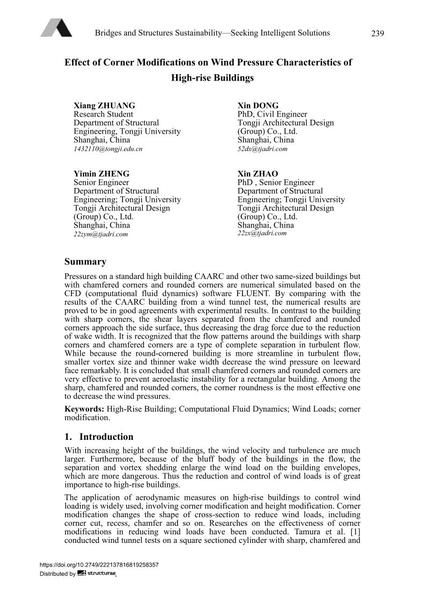Effect of Corner Modifications on Wind Pressure Characteristics of

|
|
|||||||||||
Détails bibliographiques
| Auteur(s): |
Xiang Zhuang
Yimin Zheng Xin Dong Xin Zhao |
||||
|---|---|---|---|---|---|
| Médium: | papier de conférence | ||||
| Langue(s): | anglais | ||||
| Conférence: | IABSE Conference: Bridges and Structures Sustainability - Seeking Intelligent Solutions, Guangzhou, China, 8-11 May 2016 | ||||
| Publié dans: | IABSE Conference, Guangzhou, China, 8 – 11 May 2016 | ||||
|
|||||
| Page(s): | 239-246 | ||||
| Nombre total de pages (du PDF): | 8 | ||||
| Année: | 2016 | ||||
| DOI: | 10.2749/222137816819258357 | ||||
| Abstrait: |
Pressures on a standard high building CAARC and other two same-sized buildings but with chamfered corners and rounded corners are numerical simulated based on the CFD (computational fluid dynamics) software FLUENT. By comparing with the results of the CAARC building from a wind tunnel test, the numerical results are proved to be in good agreements with experimental results. In contrast to the building with sharp corners, the shear layers separated from the chamfered and rounded corners approach the side surface, thus decreasing the drag force due to the reduction of wake width. It is recognized that the flow patterns around the buildings with sharp corners and chamfered corners are a type of complete separation in turbulent flow. While because the round-cornered building is more streamline in turbulent flow, smaller vortex size and thinner wake width decrease the wind pressure on leeward face remarkably. It is concluded that small chamfered corners and rounded corners are very effective to prevent aeroelastic instability for a rectangular building. Among the sharp, chamfered and rounded corners, the corner roundness is the most effective one to decrease the wind pressures. |
||||
| Mots-clé: |
bâtiment haut
|
||||
